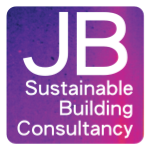Life Cycle Assessment, Part 1.
Originally posted 22nd October 2022.
3.5 minute read
In the last blog-post I looked at ways of comparing the embodied carbon of different materials (https://www.sustainablebuildconsultancy.com/blog/embodiedcarbon).
This post applies that to the lifespan of a building, giving an explanation of life cycle assessment, looking at what it includes, how, and why it’s important.
In the next post I discuss a worked example of using life cycle assessment to compare the differing impacts of different options; you can read one here: www.sustainablebuildconsultancy.com/blog/lca2
I’m not an expert in life-cycle assessment, or embodied carbon (full life-cycle assessment is a specialist job). I have a professional and personal interest in both, and they are essential tools in assessing materials and projects to assist clients. Please do comment if I’ve got anything wrong.
What do embodied carbon calculations miss?
There are various metrics that can be used to compare embodied carbon but they all come up against the problem that different materials are used in different quantities and different volumes. Some insulation materials might have very high embodied carbon per kilogram, but they’re so light that you only use half the amount in kilos compared to a heavier material with lower embodied carbon.
All the figures in the previous blog only included the carbon impact of cradle to gate emissions - those from extraction of raw materials up to the finished product leaving a factory. That ignores three significant factors:
Transport emissions between factory and building site.
Bulk transport remains almost exclusively fossil-fuelled. The further materials travel - the higher the embodied carbon. Also the heavier the material - the more fuel is needed to move it. Bulkier materials take up more space on a lorry/ship.End of life.
Various emissions and energy uses result from the end of a building’s life: deconstruction/demolition requires energy and fuel, as does the transport of materials away from the site (so as above, heavier, bulkier materials require more fuel and cause more carbon emissions). Recycling of materials can reduce end of life emissions. Some plant or timber based materials may be incinerated at this stage, which produces some energy but also more carbon emissions. Composting of bio-based materials also releases carbon, although there are other benefits.Frequency of replacement.
Some building components may need to be replaced during the life of the building, such as windows or timber cladding. If they need replacing just once in the life of a building then the carbon and energy impact of those components is effectively doubled.
Embodied carbon calculations additionally ignore the crucial impact of operational energy and carbon emissions - those caused by use of a building (determined according to its energy-efficiency, the amount of heating or cooling, and the type of fuel used).
Life cycle assessment (LCA) accounts for all of this to calculate the total carbon emissions of a building, including materials, construction, operation, demolition and removal. It helps avoid potential pitfalls such as using materials with low embodied carbon to create a building with high operational carbon. It is an essential tool to ensure the overall carbon emissions of a building are as low as possible.
Low carbon should not be seen as a substitute for low energy - even when low-carbon energy sources are used, it is important to reduce energy use as well, to ensure energy security. As more processes are electrified, minimising energy use ensures that electricity generation can continue to equal or outstrip demand. Well designed energy efficient buildings are also the most comfortable to be in, and the cheapest to run, so there are multiple wins from this approach.
Whole building Life Cycle Assessment (LCA)
Manually generating LCA data is an involved and laborious process, with much room for error and horrible amorphous spreadsheet dreams.
Thankfully there are a number of tools out there to simplify the process, such as PHRibbon or Open LCA. I’ve not used Open LCA, but have used the wonderful PHRibbon tool created by Tim Martell and the AECB. This plugs in to Passivhaus Planning Package (PHPP). PHRibbon cross-references quantities of all the materials used in a building and their densities against a list of carbon data derived from Environmental Product Declarations (EPDs) and the ICE database. It also accounts for replacement of components during a buildings lifespan.
It isn’t always possible to select the exact material used, but data can be manually added if needed - otherwise the closest match is selected. Clearly the more precise the selection - the more accurate the calculation will be.
Individual product EPDs give information on their life-cycle impact, broken down into the different stages of a product’s production, use, and disposal. As well as the global warming potential (GWP) (expressed as embodied carbon in CO₂e, accounting for the GWP of all gas emissions, converted to an equivalent amount of Carbon Dioxide) EPD’s include important information about resource depletion and ecological harm. These should always be minimised too, but I’m concentrating on carbon as it the overriding criteria.
Part 2 Applying whole building LCA to a passivhaus: www.sustainablebuildconsultancy.com/blog/lca2

